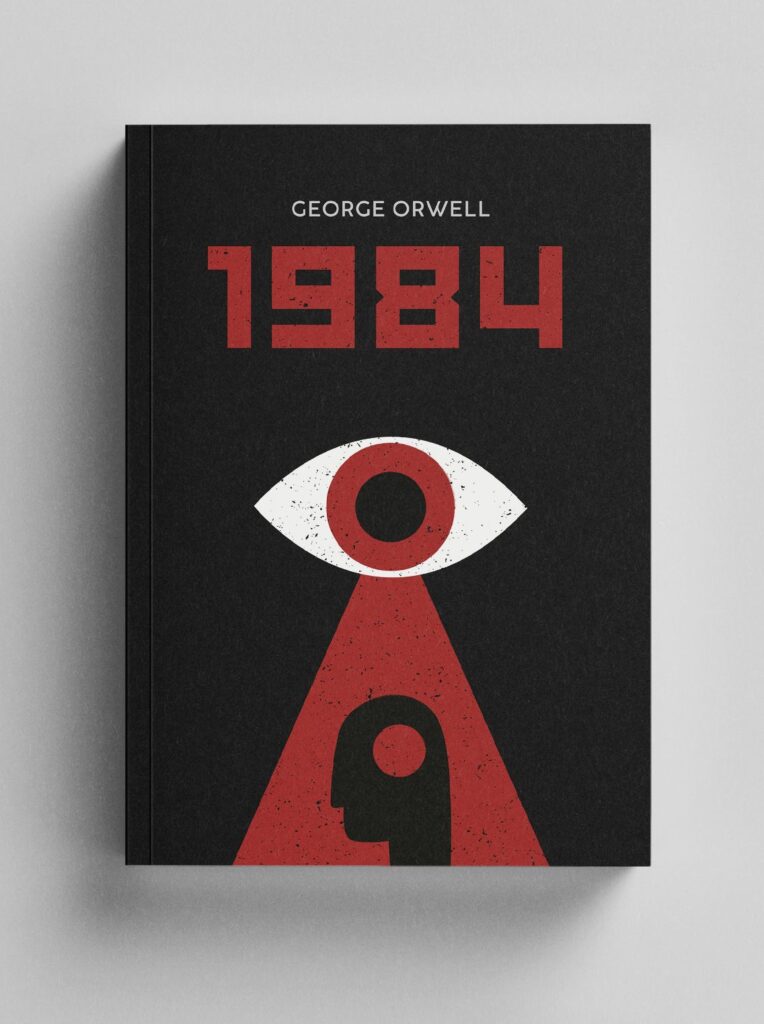The Dystopian World of 1984 by George Orwell: A Timely Warning Against Totalitarianism

1984 by George Orwell Book is a timeless masterpiece. That explores the dangers of totalitarianism and the importance of individual freedom. First published in 1949, the novel is set in a dystopian world. Where the government, known as the Party, controls every aspect of citizens’ lives. In this article, we will explore the themes, motifs, and symbols that make “1984” a seminal work of dystopian literature.
The Themes of 1984 by George Orwell
One of the most important themes of “1984” is the concept of control. The Party seeks to control every aspect of its citizens’ lives. From their thoughts to their emotions to their physical movements. The novel illustrates how a government can use fear, manipulation, and propaganda to exert its control over the people. This theme is particularly relevant in today’s world. Where social media and technology have made it easier than ever for governments to surveil and monitor their citizens.
Another central theme of the novel is the idea of truth. The Party has created its own version of reality, and citizens are forced to accept it as truth. The protagonist, Winston Smith, is a character who is struggling to find the truth and maintain his individuality in a world where conformity is prized above all else.
The Motifs of 1984 by George Orwell:
One of the most striking motifs in “1984” is the use of language. the group has created a language called Newspeak, which is designed to limit citizens’ ability to think critically and express dissent. This motif highlights the power of language as a tool of control, and it illustrates how governments can use language to manipulate their citizens.
Another important motif in the novel is the use of technology. The Party uses telescreens to monitor citizens, and the Thought Police use advanced surveillance techniques to track dissidents. This motif is particularly relevant in today’s world, where governments have access to increasingly sophisticated surveillance technologies.
The Symbols of 1984 by George Orwell:
One of the most powerful symbols in “1984” is the image of Big Brother. Big Brother is the face of the Party, and his image is ubiquitous throughout the novel. This symbolizes the all-encompassing nature of the Party’s control over citizens’ lives.
Another important symbol in the novel is the diary that Winston keeps. The diary represents Winston’s desire for individuality and freedom, and it illustrates the power of the written word as a tool of resistance against oppression.
Conclusion
1984 by George Orwell is a dystopian masterpiece. That serves as a warning against totalitarianism and the dangers of government control. Through its exploration of themes such as control, truth, and individuality, the novel provides a powerful commentary on the human condition. With its use of language, technology, and symbolism, “1984” remains a seminal work of dystopian literature that continues to resonate with readers today. Its message about the importance of protecting individual freedom and resisting government control is as relevant now as it was when the novel was first published over 70 years ago. As we navigate an increasingly complex and uncertain world, “1984” serves as a timely reminder of the need to remain vigilant against the dangers of totalitarianism and to protect our most fundamental human rights.
Tell us about your experience if you have read the novel.




